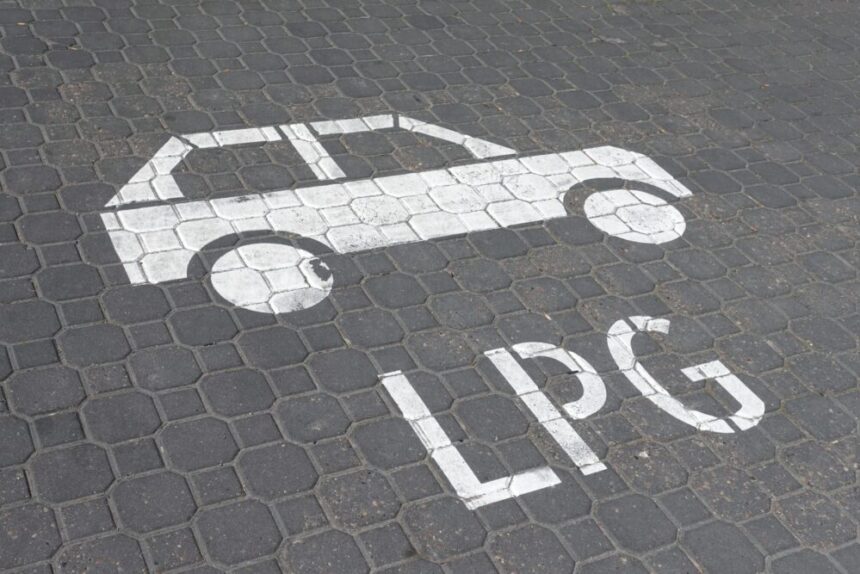LPG Vehicles: An Alternative to ICE and BEVs
Switching from traditional internal-combustion engine (ICE) vehicles to battery-electric vehicles (BEVs) can be a challenging decision for consumers. However, there are bridging technologies available that offer a compromise between the two, such as full hybrids (HEVs) or plug-in hybrids (PHEVs). Another alternative that is gaining attention is liquified petroleum gas (LPG) vehicles. In this article, we will explore what LPG vehicles are, how they work, and their advantages and drawbacks.
What is an LPG Vehicle?
LPG, which stands for liquified petroleum gas, is a liquid gas available in the form of butane, propane, or a mixture of the two. It is a by-product of processing natural gas liquid or refining crude oil. LPG used to be considered a waste product but is now recognized as a low-carbon fuel. LPG vehicles can be filled up at specific LPG pumps, similar to how petrol or diesel vehicles are refueled.
These vehicles can either be built from scratch by car manufacturers or converted from existing petrol or diesel cars by aftermarket companies. During the conversion process, components such as a large fuel tank are added to the vehicle. The size of the tank can vary, ranging from around 30 to 140 liters. The gas is filtered and put through a pressure regulator before being used by the engine.
Best of Both Worlds
LPG vehicles are known as dual-fuel cars because they can run on both LPG and traditional petrol or diesel. In some cases, traditional fuel is required initially to reach an optimal operating temperature. LPG vehicles operate similarly to traditional ICE vehicles, with the added flexibility of using LPG as a cleaner alternative fuel.
According to Liquid Gas Europe, LPG is the best-selling alternative fuel in Europe, with over 8.5 million registered vehicles in the EU. Countries like Italy, Poland, and Germany have embraced LPG due to infrastructure development, tax incentives, and government support for sustainable energy options.
Practical Benefits of LPG
One of the main advantages of LPG vehicles is their sustainability. LPG-fueled vehicles emit significantly fewer pollutants than petrol and diesel vehicles. They produce 21% less CO2, 62% less nitrogen oxides, and 90% less particulate matter compared to petrol cars. In comparison to diesel vehicles, LPG emits 96% less nitrogen oxides and 92% less particulate matter.
While LPG vehicles may not be more fuel-efficient than petrol or diesel cars, the cost per liter of LPG is usually lower, making them more economical to run. Additionally, LPG is considered safer than petrol due to the way it is stored and its lower pressure system. LPG-fueled cars are also quieter than diesel engines.
Costly Drawbacks
Despite the benefits, there are some drawbacks to consider when opting for an LPG vehicle. Converting a petrol or diesel car to run on LPG can be expensive, with costs reaching up to £2,000 in the UK. Additionally, the lack of LPG refueling infrastructure compared to petrol, diesel, and EV charging stations can make it challenging for consumers to find convenient refueling options.
In conclusion, LPG vehicles offer a sustainable alternative for motorists who are looking to reduce their environmental impact without fully committing to an electric vehicle. While there are cost savings and environmental benefits to be gained from using LPG, the initial conversion costs and limited infrastructure may deter some potential buyers. Ultimately, LPG vehicles provide a middle ground between traditional ICE vehicles and BEVs, offering a viable alternative for those seeking a cleaner fuel option. The Rise of Sustainable Fashion: A New Era in the Fashion Industry
In recent years, there has been a growing awareness and concern about the environmental impact of the fashion industry. From the use of harmful chemicals in manufacturing processes to the massive amounts of waste generated by fast fashion, the industry has come under scrutiny for its unsustainable practices. However, a new trend has emerged that is changing the way we think about fashion – sustainable fashion.
Sustainable fashion is a movement that seeks to create clothing and accessories in an environmentally and socially responsible way. This means using materials that are ethically sourced, reducing waste in the production process, and ensuring fair labor practices throughout the supply chain. The goal is to create fashion that is not only stylish and trendy, but also sustainable and ethical.
One of the key drivers of the sustainable fashion movement is consumer demand. As people become more aware of the environmental and social issues associated with the fashion industry, they are increasingly seeking out sustainable alternatives. This has led to a rise in the number of brands that are committed to sustainability, as well as a growing market for eco-friendly and ethical fashion.
Another factor driving the rise of sustainable fashion is the influence of celebrities and influencers. Many high-profile figures in the fashion industry have embraced sustainable practices and are using their platforms to promote eco-friendly brands and initiatives. This has helped to raise awareness and make sustainable fashion more mainstream.
In addition to consumer demand and celebrity influence, there are also government regulations and industry initiatives that are pushing the fashion industry towards sustainability. Many countries have implemented regulations to reduce the environmental impact of fashion production, such as bans on harmful chemicals and restrictions on waste disposal. Industry organizations and initiatives, such as the Sustainable Apparel Coalition and the Fashion Revolution, are also working to promote sustainability and transparency in the fashion industry.
Overall, the rise of sustainable fashion represents a new era in the fashion industry. It is a movement that is reshaping the way we think about clothing and accessories, and challenging the traditional norms of the industry. As more brands and consumers embrace sustainability, we can expect to see a shift towards a more ethical and environmentally friendly fashion industry. It is an exciting time for the fashion industry, as we work towards a more sustainable future.







